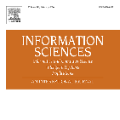The class of problems in causal inference which seeks to isolate causal correlations solely from observational data even without interventions has come to the forefront of machine learning, neuroscience and social sciences. As new large scale quantum systems go online, it opens interesting questions of whether a quantum framework exists on isolating causal correlations without any interventions on a quantum system. We put forth a theoretical framework for merging quantum information science and causal inference by exploiting entropic principles. At the root of our approach is the proposition that the true causal direction minimizes the entropy of exogenous variables in a non-local hidden variable theory. The proposed framework uses a quantum causal structural equation model to build the connection between two fields: entropic causal inference and the quantum marginal problem. First, inspired by the definition of geometric quantum discord, we fill the gap between classical and quantum conditional density matrices to define quantum causal models. Subsequently, using a greedy approach, we develop a scalable algorithm for quantum entropic causal inference unifying classical and quantum causality in a principled way. We apply our proposed algorithm to an experimentally relevant scenario of identifying the subsystem impacted by noise starting from an entangled state. This successful inference on a synthetic quantum dataset can have practical applications in identifying originators of malicious activity on future multi-node quantum networks as well as quantum error correction. As quantum datasets and systems grow in complexity, our framework can play a foundational role in bringing observational causal inference from the classical to the quantum domain.
翻译:试图将因果关系完全从观测数据中分离出来,即使没有干预,也只能从观察数据中分离出因果关系的问题类别。随着新的大规模量子系统在线运行,它打开了一个有趣的问题,即是否存在着一个量子框架来孤立因果关系,而没有在量子系统上采取任何干预措施。我们提出了一个理论框架,将量子信息科学和因果推断相结合,利用摄取原则。我们的方法的根基是,真正的因果关系方向在非本地隐蔽变量理论中将外源变量的导体最小化。拟议框架使用量子因果结构方程模型在两个领域之间建立联系:即诱因果推断和量子边际问题。首先,根据几何因量子框架的定义,我们填补了经典和量子有条件密度矩阵之间的差距,以界定量子因果模型。随后,我们用一种可缩放的算法,用非本地隐蔽的因果结构来确定子系的因果等离子结构模型,从真实的因子系的因子系而受到影响,从真实的因量子值观察开始,从真实的直径的直径直径网络中,可以确定一个成功的直径直径直径的直径的量值应用。



